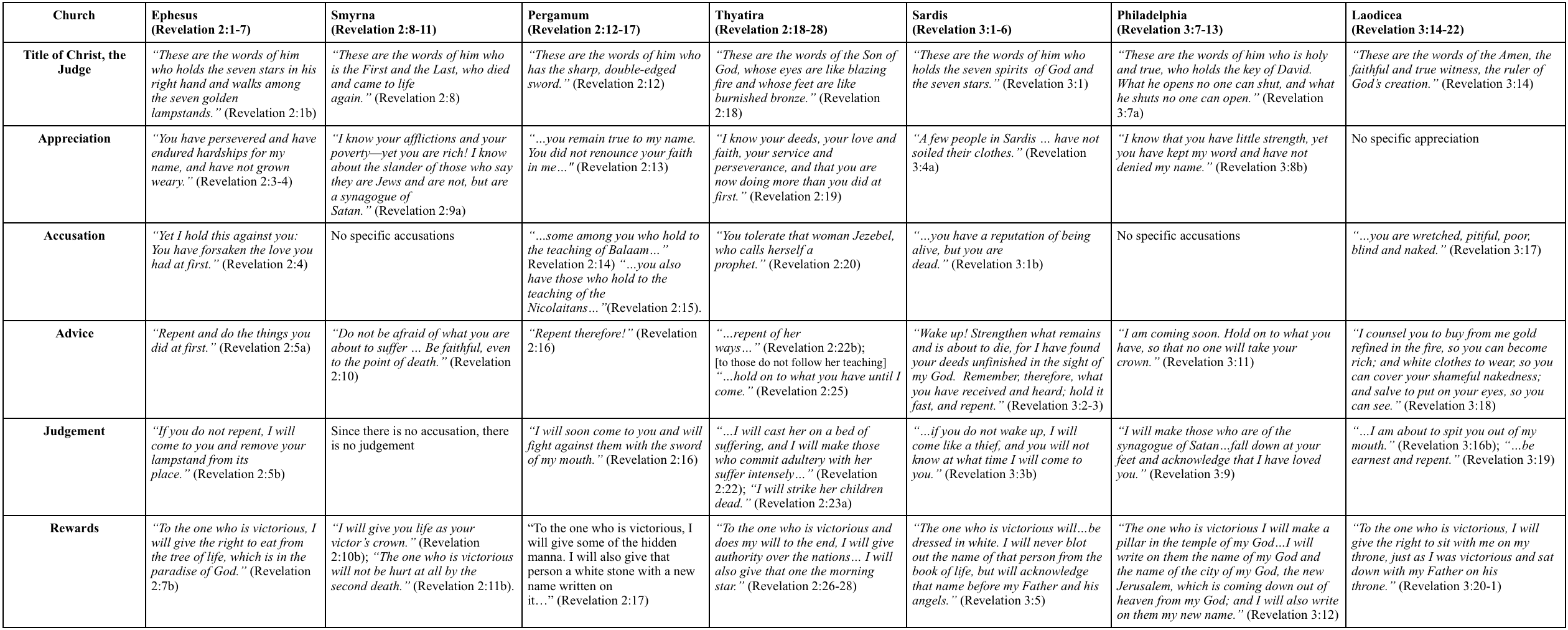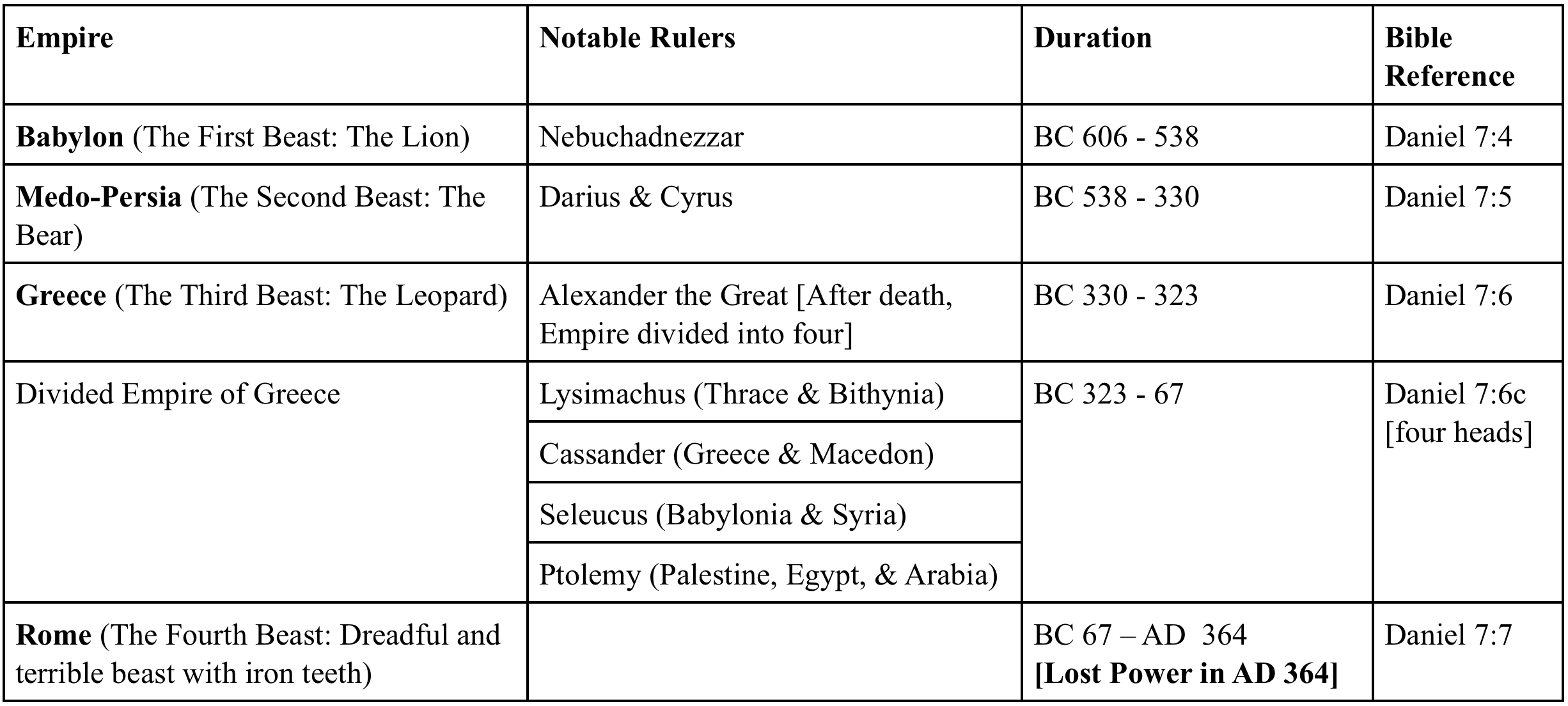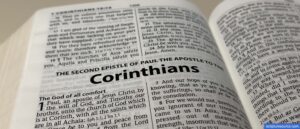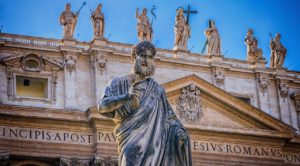An Overview of Revelation
The book of Revelation is the only prophetical book in the New Testament. The book focuses on the past, present, and future events regarding creation and redemption. The book of Genesis records the origin of everything we see and experience. On the other hand, the book of Revelation records the end of everything we see and experience. At the same time, it records the beginning of something new – a new heaven and earth and the reign of God as the eternal King in the everlasting kingdom.
The author gives a portrayal of Christian eschatology – the study of end-time events, which includes the destiny of mankind (death, resurrection, and judgement), the second coming of Christ in His glory, and eternity. Many believers and non-believers think that it is very difficult to understand and interpret the book because of its mysterious nature. One needs to understand that the book was undeniably written in the context of spiritual (inner) and physical (outer) persecution. For some, the description of the content is clear from its spiritual perspectives, while others say it is ambiguous. Due to this reason, various schools of thought have emerged to interpret the subject matter. They are as follows:
- The first and foremost is ‘The Preterist School of Thought.’ A Preterist is a person who primarily deal with the past. The term ‘preter’ is derived from the Latin prater meaning “Past” or “Beyond.” This school upholds the view that the prophecies of Revelation have already been fulfilled
- The second one is ‘The Futurist School of Thought.’ They support the view that the book contains a forecast of universal history. They believe that everything recorded from Revelation 4 to the end of the book is relating to the future events and the Church will be taken from the world at the coming of Christ according to 1st Thessalonians 4:16-17.
- The third group is known as ‘The Historicist School of Thought.’ This group developed their theory from a historical perspective its continuation as seen in Revelation. They believe that the book contains the symbolic portrayals of the life of Church from its birth to the end of the age
- The fourth group is ‘The Idealist School of Thought.’ This group gives emphasis only to the spiritual principles narrated in the book
The book is very similar to the Old Testament book of Daniel in its perception and presentation. Therefore, very often in the academic sector, the study of these two books go together under the title ‘Apocalyptic Literature.’
Title of the Book
The title of the book – ἀποκάλυψις (apokalypsis) – is drawn based on Revelation 1:1. The term is composed of two words. ‘apo’ means ‘away from’ and ‘kalypsis’ means ‘a hiding’ or ‘a veiling’. In English, it is translated as ‘revelation’ meaning ‘unveiling or unfolding or uncovering or revealing of divine mysteries which were not known previously.’ However, the book is known by several different titles which include, ‘The Revelation to John’, ‘The Apocalypse of John,’ or simply Apocalypse. As per the historical standpoints, the title of the book is simply mentioned as ‘The Revelation of Jesus Christ.’
Authorship of Revelation
Historical and internal evidences affirm the Christian tradition that the book of Revelation is written by Apostle John, the beloved disciple of Jesus (Revelation 21:20, 24). Early Church Fathers confirm that Apostle John wrote the book of Revelation, these include Bishop Polycarp (Smyrna) [a disciple of Apostle John], and Saint Irenaeus [a close friend and disciple of Bishop Polycarp]. Also, John’s own testimony reinforces that he received the prophetical message while exiled to the Island of Patmos (Revelation 1:1, 4, 9; 22:8). The original recipients were the seven churches of Asia Minor where John served as an Elder. Apostle John’s life and ministry reveals that John was actively engaged in the ministries of the early Church:
- John was the son of Zebedee and Salome, and brother of James (Matthew 4:21, 27:56)
- John lived in Galilee, probably in Bethesda (Luke 5:10; John 1: 44)
- John, like his father and brother, was a fisherman (Mark 1:19-20)
- John became the disciple of Jesus through John the Baptist (John 1:35)
- John was one among the three Disciple close to Jesus [the other two were Peter & James (Mark 14:33)]
- John was present at the raising of Jairus’ daughter (Mark 5:37; Luke 8:51)
- John asked Jesus to rain down fire on Samaritans (Luke 9:54)
- John and James were given the name ‘Boanerges,’ means “Sons of Thunder” (Mark 3: 17)
- John’s mother requested Jesus for her sons seating arrangements in Heaven (Mark 10: 35)
- John witnessed Jesus’ transfiguration on Mount Tabor (Matthew 17:1; Mark 9:2; Luke 9: 28)
- John, along with Peter, prepared the Passover supper on Jesus’ command (Luke 22: 8)
- John sat close to Jesus during the Last Supper (John 21: 20)
- John was a man of Prayer and Jesus asked him to pray for Him (Mark 14:33, Acts 3:1)
- John was present at the arrest and trial of Jesus (John 18: 15, 16)
- John witnessed the crucifixion at Gethsemane (Matthew 26:37, Mark 14: 33)
- John recognized Jesus at Sea of Galilee (John 21:7)
- John was active with Peter in Apostolic Church (Acts 3:1-4, 22; 8:14-17)
- John outlived persecutions under Roman emperors, which included Nero and Domitian
- John was exiled to the Island of Patmos by the Roman Emperor Domitian
- John was instrumental in the writings of a gospel, three epistles, and the book of Revelation
- John was the longest-living apostle and he lived until old age
- John was the only apostle who died a natural death
Date of Writing
The Roman Emperor Domitian’s rule is recorded from AD 81 to 96. This era is considered as the era of Domitian’s persecution. The Apostolic tradition believed that John had been exiled to the Island of Patmos during one of such persecution, between AD 90 and 95. However, he was released from the exile and permitted to return to Ephesus around AD 95, which was almost at the end of Domitian’s reign. The use of past tense in his writing, I, John, … was on the island of Patmos because of the word of God and the testimony of Jesus (Revelation 1:9), indicates that he received the prophetical message while he was in Patmos and it was after his release and return to Ephesus that He wrote the book. In the light of these, it is believed that the book was written around AD 96.
Recipients of the Book
The original recipients of the prophetical message were the seven churches situated in the Roman province of Asia Minor (Revelation 1:4, 11). It is understood from a historical perspective that the Roman Emperor Domitian issued a decree demanding that everyone in his empire must address him as ‘lord and god.’ Such a decree created a sharp conflicts between the people who accept the emperor as ‘lord/god’ and the faithful followers of Christ who believed that only Jesus is Lord and God. As such, the book was written initially to strengthen the believers in Asia Minor who were undergoing a measure of serious persecution because of the word of their testimony.
Although the book was focused on the believers in Asia Minor, it is also designed for the wider audience of believers through all generations because the book discloses the future plans of God – the conflicts between Christ’s followers and Satan’s entire forces, the second coming of Christ in His glory, judgement, and eternity. Thus, the book was written for both the Christians who lived in and around Asia Minor as well as Christians who lived around the world.
Purpose of Writing
It extremely important to understand the purpose of writing this book. For example, the message to the Seven Churches reveals Jesus’ evaluation of His churches about 60 to 65 years after His ascension to Heaven. The purposes of writing this book are numerous, but, a few are given below. The message of this book is revealed supernaturally to John in order to:
- make clear that Jesus Christ is the Lord and ruler over everyone and everything
- inspire Christians to be overcomers and remain faithful even unto death because the letters to the seven churches in Asia Minor reveal that the church deviated from Christ’s and the apostolic standard of truth and righteousness
- give hope and encouragement to the believers to stand fast in the face of persecution caused by their faith in Jesus Christ because only the faithful will share in the final triumph of Christ
- give Christians of all generations God’s revelation of the future
- bring awareness that times and things are not in favor of godly people and they might get worse, but in the end, Christ will triumph and He will establish His kingdom – an everlasting kingdom with a new heaven and a new earth
General Outline of Revelation
- The Prologue (Revelation 1:1-8)
- The Vision of the Son of God in His Glory (Revelation 1:8-20)
- The Message to the Seven Churches (Revelation 2:1 – 3:22)
- The Message to the Church of Ephesus (Revelation 2:1-7)
- The Message to the Church of Smyrna (Revelation 2:8-11)
- The Message to the Church of Pergamum (Revelation 2:12-17)
- The Message to the Church of Thyatira (Revelation 2: 18 – 29)
- The Message to Sardis (Revelation 3:1-6)
- The Message to Philadelphia (Revelation 3:7-13)
- The Message to the Church of Laodicea (Revelation 3:14-22)
- Visions of things in Heaven and on Earth (Revelation 4:1 – 11:19)
- The vision of God on His Throne (Revelation 4:1-11)
- Vision of 24 elders (Revelation 4:4)
- Vision of four creatures (Revelation 4:6-8)
- The Lamb and the Seven Sealed Book (Revelation 5:1-14)
- The Beginning of the Great Day of God’s Wrath and The opening of first six seals (Revelation 6:1-17)
- The Saints of the Great Tribulation and Two Great Multitudes (Revelation 7:1-17)
- The Multitude of 144,000 (Revelation 7:1-8)
- The Uncountable Multitude (Revelation 7:9-12)
- God’s Assurance of Blessings (Revelation 7:13-17)
- Opening the Seventh Seal and the 7 Angels with 7 Trumpets (Revelation 8:1 – 9:21)
- The First Six Trumpets (Revelation 8:7 – 9:21)
- The Mighty Angel with the Little Scroll (Revelation 10:1-11)
- The Two Witnesses (Revelation 11:1-14)
- The Seventh Trumpets (Revelation 11:15-19)
- Battles on earth and in Heaven and Christ’s conflict with Satan (Revelation 12:1 – 22:5)
- Conflict from an Earthly viewpoint (Revelation 12: 1 – 13:18)
- The Dragon (Revelation 12:1-17)
- Last Half of the Week; Second Half of Tribulation (Revelation 13:1-18)
- The Beast from the Sea (Revelation 13:1-10)
- The Beast from the Earth (Revelation 13:11-18)
- Conflict from the viewpoint of Heaven (Revelation 14:1-20)
- The Lamb and 144,000 on Mount Zion (Revelation 14:1-5)
- The Announcement of Three Angels (Revelation 14:6-20)
- Seven Angels with Seven Plagues (Revelation 15:1-8)
- Last stage of Conflict (Revelation 16:1 – 19:10)
- The Seven Bowls of God’s Wrath (Revelation 16:1-21)
- Judgement upon the Ecclesiastical Babylon – the Prostitute (Revelation 17:1-18)
- Judgement upon the Political Babylon: The Fall (Revelation 18:1-24)
- Rejoicing in Heaven (Revelation 19:1-10)
- The Final Conflict (Revelation 19:11 – 20:10)
- The Rider on the White Horse (Revelation 19:11-18)
- The Defeat of the Beast at the Battle of Armageddon (Revelation 19:19-21)
- The Millennial Rule of Christ (Revelation 20:1-6)
- Defeat and Doom of Satan (Revelation 20:7-10)
- The Judgement before the White Throne (Revelation 20:11-13)
- The Destiny and Doom of the Unrighteous (Revelation 20:14-15)
- Portrayal of the New Heaven and New Earth (Revelation 21:1 – 22:20)
- Description of New Jerusalem (Revelation 21:1-27)
- Description of the River of Life (Revelation 22:1-5)
- The Testimony of Trustworthy Word (Revelation 22:6, 16, 18-19)
- The Coming of the Lord Christ Jesus (Revelation 22:7-15, 20)
- The Invitation of the Spirit and the Bride (Revelation 22:17)
- Conflict from an Earthly viewpoint (Revelation 12: 1 – 13:18)
- The Epilogue (Revelation 22:21)
Major Themes of Revelation
The major themes of the book revolve around conflict and consummation.
The Blessings to those who read, hear, and obey (Revelation 1:3):
Blessed is the one who reads aloud the words of this prophecy, and blessed are those who hear it and take to heart what is written in it, because the time is near.
- Blessed is the one who reads aloud the words of this prophecy
- Blessed are those who hear the words of this prophecy
- Blessed is those who take to heart what is written in the words of this prophecy
The Curses to those who either add or take away from the words (Revelation 22:18-19):
18 I warn everyone who hears the words of the prophecy of this scroll: If anyone adds anything to them, God will add to that person the plagues described in this scroll. 19 And if anyone takes words away from this scroll of prophecy, God will take away from that person any share in the tree of life and in the Holy City, which are described in this scroll.
Three Titles of Jesus Christ in Revelation (1:5):
- A Faithful witness (1:5a)
- The first born from the dead [begotten of the dead] (1:5b)
- The ruler [Prince] of the kings of the earth (1:5c)
Seven-Fold Glory of the Risen Christ in Revelation (1:14-16):
Apostle John testified, I turned around to see the voice that was speaking to me. And when I turned I saw seven golden lampstands, 13 and among the lampstands was someone like a son of man dressed in a robe reaching down to his feet and with a golden sash around his chest … (1:12-16; [also refer to Daniel 7:13-14])
- His head and hair were white like wool, as white as snow (Revelation 1:14a)
- His eyes were like blazing fire (Revelation 1:14b)
- His feet were like bronze glowing in a furnace (Revelation 1:15a)
- His voice was like the sound of rushing waters (Revelation 1:15b)
- He had seven stars in His right-hand (Revelation 1:16a)
- Out of His mouth came a sharp double-edged sword (Revelation 1:16b)
- His face was like the sun shining in all its brilliance (Revelation 1:16c)
There are Seven who are Blessed in the Book of Revelation:
- The Blessed are those reading, hearing, and obeying the Word of God (Revelation 1:3)
- The Blessed are those who die in the Lord (Revelation 14:13)
- The Blessed are the Watchful Pilgrim (Revelation 16:15)
- The Blessed are the invited guests of God. (Revelation 19:9)
- The Blessed are those death cannot touch (Revelation 20:6).
- The Blessed is the wise reader of God’s Word (Revelation 22:7)
- The Blessed are those who (obey and) do His commandments (Revelation 22:14)
Pay special attention to:
- Authority of the Word of this book (Revelation 1:1, 3, 5; 22:18-19)
- John’s Commission (Revelation 1:11, 19)
- An awesome vision of the Exalted Christ among the Lamp stands [Churches] (Revelation 1:9-20)
- The Reward of Saints in Heaven after Great Tribulation (Revelation 7:13-17)
- The Beast and his Number 666 (Revelation 13:11-18) [Refer 2 Thessalonians 2:3-4]
- The Lamb and the 144,000 Saints on Mount Zion (Revelation 14:1-5)
- Preaching of the Eternal Gospel (Revelation 14:6-7)
- The Thousand Years Reign of Christ [Millennium] (Revelation 20:1-6)
- Description of New Jerusalem [where we are going to be] (Revelation 21:1-27)
- The Coming of Jesus (Revelation 22:1-21)
Elaboration
Daniel prayed for the revelation of the future of his people. Hearing his anxious supplication God dispatched an angel with the answer to Daniel’s prayer (Daniel 9:24-27).
There are many expositions by eminent Biblical scholars on the 70 weeks of Daniel’s great prophecy. The course and consummation of God’s dealings with Israel is to be accomplished in 70 weeks. These weeks are weeks of prophetic years. A prophetic year consists of 12 months of 30 days or three hundred and sixty (360) days and each week stands for seven prophetic years. The Hebrew word for week is ‘shabua’ meaning “a seven.” Thus, seventy weeks stands for seven times seventy prophetic years of 490 years. These 70 weeks are divided into three periods:
- Seven weeks or 49 prophetic years (7 × 7 = 49)
- The second period is 62 weeks or 434 prophetic years (7 × 62=434)
- The third period is 1 week or 7 prophetic years (1 × 7 = 7)
The first period of 49 prophetic years opened with a commandment to restore and to build Jerusalem. The second period of 434 prophetic years immediately followed and extended from the time Jerusalem was rebuilt under Nehemiah unto the Messiah the Prince (Daniel 9:29). The first and second period combined equal the seven weeks and 3 score and 2 weeks of Daniel 9:25 or a total of 69 weeks or 483 prophetic years. This is now history.
In the year 536 BC, Cyrus, the Persian taking the throne of the new Medo-Persian Empire issued a decree – the liberation of all Jews within the Empire that they might return to Jerusalem. The record is found in Ezekiel 1:1-3. We see that this decree was confined to the building of the house of the Lord God of Israel. This cannot be the decree related to the 70 weeks, the first decree of Artaxerex. The next decree in imperial order was authorizing Ezra to go up to Jerusalem on important business. This is found recorded in Ezra 7. It was given to Ezra in the seventh year of the King Artaxerex (Ezra 7:8). Artaxerex reigned over the Persian Empire from 465 to 424 BC. His seventh year was 458 BC, just 78 years from the time Jews returned to Jerusalem. This is not the decree that we are looking for.
The third decree, with which we are concerned, is given to Nehemiah by Artaxerex in the 20th year of his reign, in the year 445 BC. The account is recorded in Nehemiah 1 & 3. The whole story of the building of the walls of Jerusalem by Nehemiah concurs with the character of this decree. Nehemiah’s journey to Jerusalem was of political purpose, this can be shown through numerous evidences (Nehemiah 2:9, 10, 17, 19, 4:1-2).
The next is given in Nehemiah 2. The edict was given in the month of Nissan (14th day of March, 445 BC), in the 20th year of the king. It took 49 years to rebuild the city and the wall. The 49 years (7 weeks) consist of time from the issuance of the commandment until the completion of the rebuilding.
The second period of 434 years consisted of the time period from the rebuilding of Jerusalem under Nehemiah to time period of the Messiah the Prince (Daniel 9:25) which was the day when Jesus made a triumphant entry into Jerusalem as Messiah the Prince. Sir Robert Anderson in his book, “The Coming Prince” says the first week opened on 14th March, 445 BC and 69th week closed on April 6th, 32 A.D, on the very day Jesus rode in his triumphant entry into Jerusalem. After these two periods (7 + 62 =69) shall the Messiah be cut off (Christ’s crucifixion).
The 70th Week: The final division of the 490 years is known as the Daniel’s 70th week and is yet to come. It is the period of the great tribulation, which occurs between the translation of the Church and the Second Advent (between rapture and revelation). The first 69 weeks came to a conclusion during the lifetime of the Messiah, but before his crucifixion (V.20). The advents of the 70th week belong to a future relationship of 7 years between the Anti-Christ and Israel. The rapture will take place before the 70th week opens.
Parenthetical Period: The Church is not revealed in Daniel’s prophecy. The Church age is between the 69th and the 70th week.





